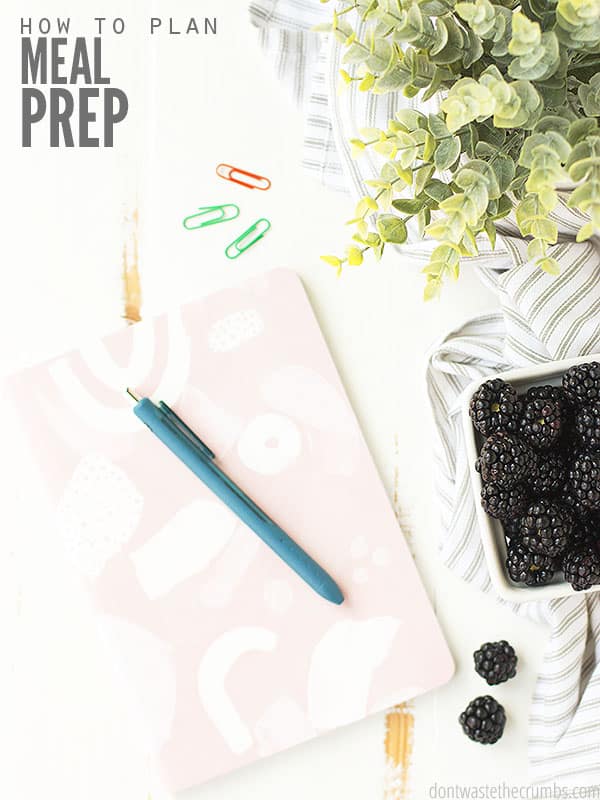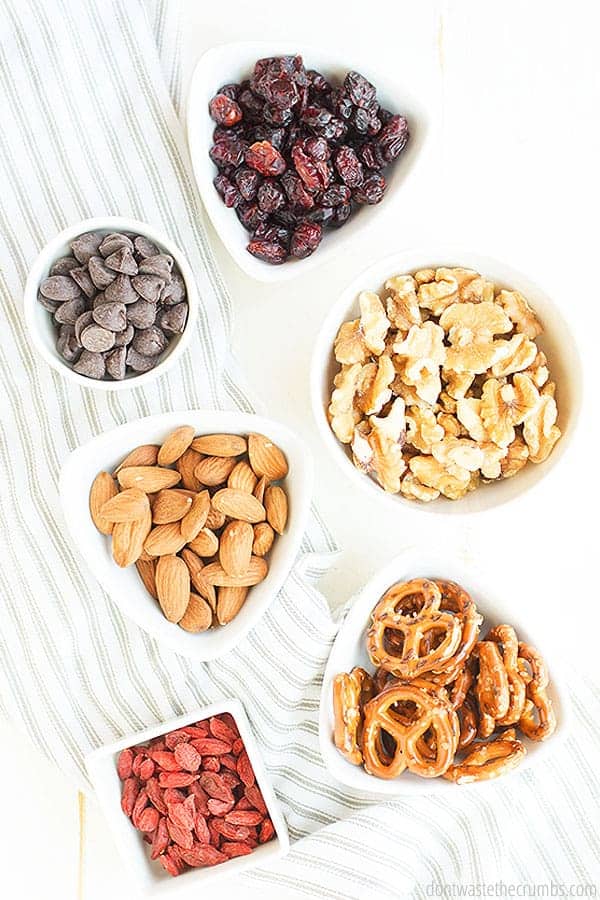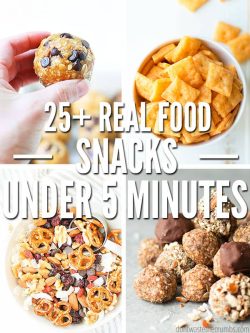Learn How to Meal Prep for the week based on your weekly or monthly meal plan! Helps you to stay organized in the kitchen, and saves time & money!

If your days are crammed with chaotic schedules, tight timeframes, and the constant allure of not-so-healthy food options, then brace yourself for a game-changing solution: meal prepping. This beginner-friendly meal prep guide provides a detailed analysis of all things meal prep! Let’s get into it!
Benefits of Meal Prepping
After implementing this list for two weeks in my kitchen, I’ve come up with the following benefits. It:
- Saves Time: I can spend less time in the kitchen each day and have more free time for other activities.
- Allows More Family Time: I can have my kids come in and help me prep so I get to spend time with them and speed up the process.
- Makes Healthy Eating Easier: Planning my meals helps me make more conscious choices about ingredients, portion sizes, and dietary preferences.
- Reduces Food Waste: Making make-ahead meals helps me use ingredients strategically, minimize unused produce, and save money.
- May Save Money: Planning my meals ahead of time helps me avoid impulsive purchases and be more budget-conscious.
- Customizable: I can tailor my meals to meet specific dietary goals or preferences.
Different Types of Meal Prep
Whole Meals
You can prep all of your meals or some depending on your needs. Prepping whole meals consists of making entire meals and eating them throughout the week. This type of meal prep is perfect for those who don’t mind eating the same food every day or have a large family and don’t have the time to make separate meals for everyone.
Ingredient Prep
Instead of prepping entire meals, you can prep ingredients to mix and match throughout the week. For example, you can chop vegetables beforehand or cook pasta, rice, black beans, etc., the day before to lighten your load.
Batch Cooking and Freezer Cooking
You can make full meals and freeze them for later use. Some meals work better for freezing, like Baked Ziti, Soup, Chili, Stew, Lasagna, and dough like Pizza Dough and Bread Dough!

How to Meal Prep: A Beginner’s Guide
#1 Grab Your Prepping Materials
There are several different tools you can use to make meal prepping a breeze:
- The oven – The oven is perfect for roasting vegetables and baking dishes with a lot of juices and sauce.
- The stovetop – The stovetop is perfect for sauteeing vegetables and boiling potatoes, rice, and noodles.
- Instant Pot – I love using my Instant Pot for defrosting frozen meat and vegetables!
- Air Fryer – This appliance cooks things much faster than the oven but has limited space, so you can switch off between the two or use the air fryer for all of your meals if you have extra time.
- Crockpot – The crockpot is the perfect tool for cooking longer meals, like a stew that needs to cook for several hours.
- Food storage containers – You can use glass containers or plastic, depending on your preference.
#2 Make a Meal Prep Plan
Getting started is not as hard as you think. Here are some tips for making a weekly meal prep plan:
Plan Meals
Planning your meals is the first step to ensuring your meal prep experience runs smoothly!
Here’s how to craft a meal plan that works for you:
- Choose a day of the week to create your meal plan so you can stay consistent.
- Determine what kind of recipes you and your family like and write them down. This can be homecooked meals you make often, certain kinds of takeout, or any other foods you and your family enjoy.
- Create a grocery list or create meal prep recipes from foods you already have in your kitchen and purchase anything you don’t already have. For example, if you have tons of canned goods, try to create recipes that utilize those ingredients so you’re not wasting money.
Here are some tips for planning your meals:
- Remember to take certain dietary restrictions or preferences into account when making your meal plans. For example, if you’re on the low-carb keto diet, make sure to purchase tons of meat and vegetables and stay away from high-carb foods such as pasta and rice.
- Determine whether you’re going to meal prep for the week or a few days. This will determine how much food you need to purchase and prep.
- Write down the meals you want to prep as well as the ingredients you need for each of those meals. This way, you can mix and match various ingredients so you’re not eating the same thing every day!
- You can also use your favorite recipes to prep as well! For example, if you and your family loves lasagna, you can add that to the list to prep!
- If you’re trying to eat healthier, you can try to come up with healthier versions of what you already love. For example, you can try making lasagna with low-fat mozzarella, ricotta cheese, and ground beef (or try Meatless Lasagna). Or, you can make healthier versions of your favorite takeout meals like egg rolls, “fried” chicken, and more!
- Don’t restrict yourself to rigid recipes. Feel free to experiment with different types of protein, veggies, starches, etc., to make a fully customized meal plan you’ll love! For example, you don’t have to have chicken with rice and broccoli every single day. Instead, make a big batch of chicken and pair it with sweet potatoes, rice, pasta, black beans, etc.
- Shop for versatile ingredients that can be used in different ways throughout the week. Think staple foods like potatoes, chicken breasts, bell peppers, and fresh fruit that offer endless possibilities.
Determine Dietary Needs and Goals
Maybe you’re aiming for healthier options, exploring plant-based protein, or experimenting with new flavors. This is your chance to shake things up and savor a variety of delightful dishes.
Check Your Schedule
What does a typical week look like in your life? Do you go out with friends one or two nights a week? Do you get takeout? Do you grab breakfast in the morning?
Answering these questions will help you create a meal plan for your lifestyle. For example, don’t plan a ton of dinners for the week if you go out multiple nights a week or get takeout. Or, if you usually grab breakfast before work, don’t prep a ton of food for breakfast unless you’re trying to eat more meals at home.
#3 Purchase Your Ingredients
Stick to your list! Also, don’t worry about organic produce if you’re on a tight budget. Just purchase foods that fit your budget!
Lastly, if the grocery store is out of the item you need, just get the next best thing or find a substitute. Use this guide on food substitutions to be prepared if ingredients are unavailable while grocery shopping.
#4 Get Cooking
Set aside a designated meal prep day, or break it down into smaller sessions if that suits your schedule. Then, whip out your trusty crock pot or sheet pan to effortlessly cook larger quantities of food with minimal effort. Consider using those tools like the Instant Pot or air fryer to speed up the process.
#5 Divide and Conquer
Opt for glass or airtight containers that keep your creations fresh and flavorful. Divide up your food into individual portions in meal prep containers. Store larger servings in food storage containers if you plan for a family meal. Or separate by ingredient into appropriate size containers or baggies. Do not forget to label EVERYTHING! (Trust me, I know!)
Pro tip: Leave room for a sprinkle of extra flavor or a drizzle of Salad Dressing to jazz up your meals when it’s time to dig in.

The Best Foods for Meal Prepping
There are many nutritious foods to choose from when it comes to meal prepping. First things first, it depends on your health goals. For example, are you simply trying to reduce your fast food intake, or are you trying a new special diet for weight loss? Answering these questions will help you plan your meals for the whole week to keep yourself on track with your goals!
Here are some nutritious options for making delicious meals throughout the week:
- Frozen vegetables – Frozen vegetables are super convenient and cost less than fresh vegetables! After cooking them, you can barely taste the difference anyway, so why not save a little extra money?
- Starchy vegetables – Potatoes, sweet potatoes, butternut squash, acorn squash, and carrots.
- Whole grains – Brown rice, quinoa, farro, and barley.
- Protein – Chicken breast, ground beef, steak, and salmon.
- Fruit – Apples, grapes, bananas, strawberries, blueberries, oranges, and pears.
- Nuts and seeds – Sunflower seeds, pumpkin seeds, walnuts, almonds, pecans, and cashews.
The Worst Foods for Meal Prepping
- Eggs – Reheated eggs are usually dry and rubbery, so it’s best to prep these as you need them.
- Seafood – Seafood doesn’t last very long in the fridge. However, you can prep seafood and freeze it to ensure it stays fresher longer.
- Bread – If you’re making toast or making sandwiches, it’s best to save that step right before your meal so your bread doesn’t get soggy or stale. You can freeze bread using this Ulitmate Guide to Freezing Baked Goods.
- Leafy greens – Ingredients like kale, spinach, romaine lettuce, and arugula won’t taste great reheated. Instead, add these ingredients after heating your meal to ensure maximum taste.
Easy Meal Prep Ideas for Each Meal
- Breakfast Meal Prep – If you don’t have much time to eat breakfast in the morning, you can prep something like Overnight Oats to make your mornings a breeze. This freezer-cooking breakfast plan is perfect!
- Lunch Meal Prep – Easy lunches like Wraps, Homemade Lunchables, and sandwiches are a great way to save time and energy!
- Dinner Meal Prep – For a single person, Pizza Bagels and Slow-Cooker Chicken Tacos are easy dinner options. For a large family, meals like Slow Cooker Beef Stroganoff or these Dump Dinner Meals are perfect for serving a larger number of people!
- Snacks Meal Prep – Snacks like a Yogurt Parfait, Trail Mix, Energy Balls, and Granola Bars are perfect for meal prepping and on-the-go snacks!
Here’s a One-Week Chicken Meal Prep Plan!

Common Meal Prep Mistakes to Avoid
Keep Your Meal Prep Recipes Simple
Keeping things simple will make your life so much easier. Nothing is worse than crafting an extravagant meal with too many steps and ingredients. So, try to keep things simple by focusing on one lean protein, healthy fats, and carb source.
Make Balanced Meals
Making balanced meals ensures you get the correct amount of nutrients you need each meal. Plus, you’ll feel much more full and satisfied eating balanced meals! For example, a balanced meal consists of protein, carbs, and fat. An example of a balanced meal would be Salmon with Rice and Broccoli and avocado. However, it’s also important to consider dietary needs and preferences when making balanced meals.
Choose Meals You’ll Actually Enjoy
Making meals you don’t like will only lead to throwing away food or dreading meal times. Instead, prep foods you actually enjoy so you’ll be more likely to stick with your prep!
Make Enough Food
One of the worst things you can do during meal prepping is not making enough food. So, try to divide out your ingredients before cooking to ensure you have exactly what you or your family needs throughout the week!
Tips
Schedule Time for Meal Prepping
Scheduling time for meal prepping will help you stay on track. For example, you can have a meal prep day where you prep all of your meals or ingredients. This way, you already have it in your schedule, so you’ll be more likely to go through with it!
Make a Shopping List
Making a shopping list makes it easier for you to stick with your plan instead of blindly purchasing random ingredients that may or may not come together nicely.
Meal Prep for One
You can easily adapt your meals for one person by making individual portions from various ingredients. For example, if it’s just you, you might not want to make a recipe for four people. So, you’d want to prep ingredients and then make single servings to eat throughout the week!
Adapting Meals to Feed a Family
If you’re prepping for your family, you can easily adapt your meals to fit your family’s needs. For example, you can make big batches of whole meals and freeze them for later use. Another way to meal prep for your family is to prepare ingredients beforehand and create your meals throughout the week. An example of this method would be to chop up vegetables like bell peppers and broccoli so you have them on hand when you’re ready to cook.
FAQ: How to Meal Prep
How long will meal-prepped food last?
Meal-prepped foods can last anywhere from two to five days in the refrigerator, depending on the type of food. For example, chicken will be kept in the refrigerator for 3-4 days, while cooked vegetables can be kept for 3-7 days.
Can anyone meal prep?
You don’t have to be an athlete to meal prep! Meal prepping is perfect for anyone wanting to stick to a particular diet, cut down on waste, eat healthier with a busy schedule, want more free time to spend with loved ones, etc.
What if I don’t want to eat the same thing every day?
No worries! You don’t have to prep one type of meal and eat it throughout the week. Instead, you can prep ingredients and mix and match them to keep things interesting. You can also make big batches of various meals and freeze them. Then, you can pull out a frozen meal or two throughout the week to mix things up.
What can I prep beforehand to make my life easier?
You can chop veggies, make buns, shred cheese, make breadcrumbs, wash lettuce, etc.
Meal Prepping Final Thoughts
Meal prepping doesn’t have to be complicated. With these tips, you’ll be on your way to living a more stress-free life one meal at a time! Whether you’re a busy professional, a parent on the go, or simply someone who craves nutritious meals without the hassle, meal planning is your golden ticket to success! Let me know if you use this guide and which meals you decide to make! I’d love to hear all about your delicious food creations!
More on Meal Prepping
- How to Meal Plan and Make It Work
- 7 Chicken Meal Prep To Cook Once and Eat All Week
- One Hour Freezer Cooking Meal Prep: Breakfast
- The Ultimate Guide to Homemade Instant Oatmeal Packets









Leave a Comment